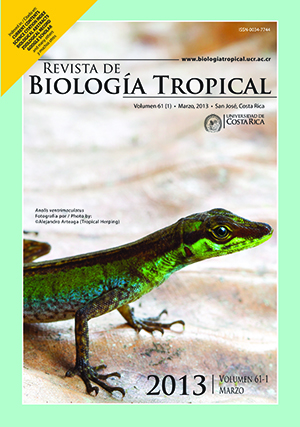Resumen
Los cangrejos Brachyura son especies iteróparas, que presentan alta diversificación en los patrones de reproducción, que pueden haber evolucionado como una respuesta específica de la especie a las condiciones ambientales. Las especies tropicales frecuentemente presentan una reproducción en todo el año debido a las condiciones estables del medio. El cangrejo Goniopsis cruentata es una especie ampliamente distribuida en largo del Atlántico occidental, y que habita prácticamente cada micro-hábitat en el ecosistema de manglar. El objetivo del presente estudio fue evaluar el periodo de reproducción del cangrejo G. cruentata en el noreste de Brasil. Un total de 71 hembras ovadas, fueron capturadas entre agosto 2007 y julio 2008, y utilizadas para obtener el periodo de reproducción de esta especie. Nuestra hipótesis es que, ya que las zonas tropicales no presentan gran variación de las temperaturas, las oscilaciones temporales de la salinidad son el principal factor que influye en la actividad reproductiva de G. cruentata. Se analizó el período reproductivo mediante la proporción mensual de hembras ovadas. Una correlación fue aplicada para evaluar la influencia de los factores abióticos limitantes (salinidad, pluviosidad, temperatura del aire y del agua) en la época de crianza. La población se reproduce continuamente con picos estacionales en el período seco, lo que no fue asociado a las variaciones mensuales de salinidad, precipitación y temperatura del aire y del agua. Por lo tanto, nuestra hipótesis fue refutada. Sin embargo, la reproducción se intensificó en el período seco, cuando la salinidad y las temperaturas fueron más altas y la precipitación fue menor. Se concluye que, a pesar de que la reproducción no está relacionada con la variación mensual de los factores ambientales limitantes, ella ocurre en períodos de mayor salinidad y temperatura, y baja precipitación.##plugins.facebook.comentarios##
Descargas
Los datos de descargas todavía no están disponibles.






